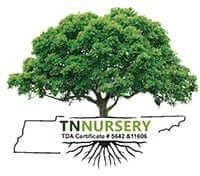Plants to the Rescue
Share
Dealing with Backyard Erosion
Summer might bring warm days and blooming gardens, but it’s not all sunshine and picnics. Across much of the country, sudden weather swings often mean heavy rainstorms rolling in. And while the rain can be great for the larger ecosystem, it can also wash away the very ground it thrives in. Little by little, all that water wears down the soil, sometimes leading to erosion, messy landscapes, or even landslides in more extreme cases.
The Problem with Erosion
It is often thought that erosion is only a problem around rivers, construction sites, or rural hillsides, but erosion can take place anywhere where there is soil exposed to water. This leads homeowners to be blind sighted when they notice their very own backyard begins to wear away with muddy runoff. This not only ruins tons of hard work on a carefully cared for lawn but is also dangerous for surrounding structures. The excess of water and unstable ground may lead to flooding, foundation damage, or structural weakness in decks and fences. This can potentially attract very unwanted pests, such as termites or carpenter ants.
As soil gets washed away and is otherwise unstable from erosion, it leaves the ground barren. While this is quite unsightly, it is also bad news for the biodiversity in the yard. Noxious weeds, as opportunistic growers, can make quick work of the blank slots and take over the garden.
But, not to worry. Fixing up eroding zones can be just as easy as putting a few choice plants in the ground. Whether you're looking to prevent erosion, or already deep in the trenches, this complex issue can be addressed with a gardener’s touch.
How Plants Can Prevent Future Erosion
To prevent erosion from happening, it is important to identify and 'spot-treat' the areas of a home landscape that are most vulnerable.
· Slopes & Hills: These are automatically at the highest risk, because gravity works against it. With every rainfall, the grains of soil will have no choice but to wash downwards. Because of this, it is best to look towards plants that will maintain the natural, sloped integrity of a hill while providing structural support underneath the surface. Large, floppy plants aren’t always a great choice here because the height adds weight that will further drag the soil downwards. The best plants to add support to a sloped area are groundcovers, grasses, and mosses. Haircap Moss, for example, will densely spread along a hillside, ‘knitting’ the soil together as it grows and absorbs excess, problematic moisture.
· Gutter Downspouts: This spot will naturally collect tons of water that rushes out aggressively during rainstorms, dangerously dashing the soil along with it. The big worry here is damage to a foundation or surrounding structures, so it is important to find something that not only will stabilize the soil but also absorb plenty of excess water. Look for water-loving plants that can thrive in poor soil, such as ferns, sedges, and even some native flowers like swamp milkweed. Ostrich Fern is a fantastic contender for this spot, as it thrives in consistently moist soil and spreads with dense rhizomes. This hardy fern will absorb excess water and prevent the washing away of soil beneath the downspout.
How Plants Can Solve Existing Erosion
Sometimes, the area has already become waterlogged and eroded. If that is the case, there are options to help build the spot back up.
· Naturally Rebuild the Soil: Choose plants that thrive in moist areas that will contribute to the natural ecosystem, reintroducing nutrients into the ground below. Groundcovers and grasses are the quickest way to do this. Switchgrass, Clovers, and Creeping Juniper are great choices for this purpose.
· Introduce Long-Lasting Structure: For a long-term, reliable solution, consider planting certain trees along your eroded area. Weeping Willow is a tree that will quickly push strong, deep root systems into wet ground and stabilize the ground. It will do double duty by also absorbing (and loving) excess moisture. This will anchor the soil for a long-term, foolproof solution that not only solves current issues, but prevents future eroding from occurring.
Other Proactive Solutions
Carefully chosen plants are among the most effective ways to protect your landscape from erosion before it starts or gets worse, but plants aren’t the only solution. There are a few different tools you can use to enhance the effect of these plants to protect against erosion.
· Mulching: Eroded soil is often barren and lacking structure. Amending the soil with mulch or compost is a great way to reintroduce more substance to the soil, particularly in poorly drained areas. Mulching around plants placed in erosion zones will help support their overall health, too.
· Support Structure: One of the best ways to hold soil in place on a slope or hill is a retaining wall, as it works against gravity to withstand the weight of dragging soil. Plants with stabilizing root systems may then be planted above the retaining wall to solidify the problem area.
· Drainage Solutions: If an area in your yard is known to be extra soggy or prone to waterlogging, it may be prudent to consider improving drainage. For gutter areas, it is useful to redirect downspouts with extenders to push water away from the home.
